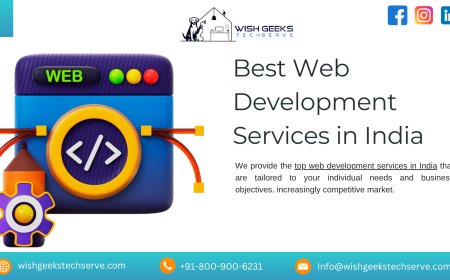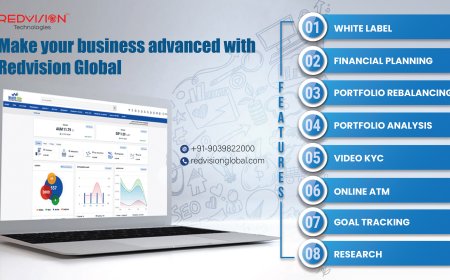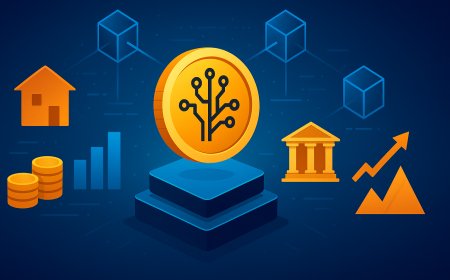"Why Adaptive Software Development Beats Traditional Methods in 2025"
adaptive software development

In the ever-evolving world of software development, agility and responsiveness have become the cornerstones of success. As we navigate through 2025, the limitations of traditional development methods are becoming more apparent than ever. Businesses, startups, and development teams are increasingly turning to adaptive software development to keep pace with shifting user needs, evolving technologies, and unpredictable market demands.
So, what makes adaptive software development superior to traditional models in 2025? Lets explore why this dynamic approach is winning the race for innovation and efficiency.
Understanding Adaptive Software Development
Adaptive software development (ASD) is an agile methodology designed to support high levels of change, uncertainty, and collaboration in software projects. Originally developed by Jim Highsmith in the 1990s, ASD has become increasingly relevant as businesses require faster, more flexible development practices.
Unlike traditional methods like the Waterfall model, where every step is planned and executed in a linear, rigid order, adaptive software development follows a cyclical and responsive approach. The three primary phases of ASDspeculate, collaborate, and learnallow teams to continuously adapt to feedback, changing requirements, and new opportunities.
Why Traditional Development Falls Short in 2025
Traditional development methods are often heavily documentation-based, relying on fixed requirements and detailed upfront planning. While this works in predictable environments, it's no longer viable in 2025 for several reasons:
-
Requirements Change Rapidly:
With AI, cloud computing, and user behavior evolving rapidly, business needs can change overnight. Traditional models dont accommodate these shifts well. -
Delayed Feedback Loops:
Waterfall and similar models often delay feedback until the end of the development cycle, making it harder to course-correct and leading to misaligned products. -
High Risk of Failure:
When projects are planned entirely upfront, theres a risk of delivering a product that no longer meets user needs by the time it's released. -
Slow Time-to-Market:
Long development cycles mean slower releases, which can leave businesses lagging behind competitors.
The Advantages of Adaptive Software Development in 2025
1. Flexibility in Uncertainty
In 2025, one thing is certain: change is constant. Adaptive software development is built to thrive in unpredictable environments. Teams can revise goals, update features, and pivot based on real-time datasomething traditional methods struggle with.
Instead of resisting change, ASD embraces it. This flexibility helps businesses innovate faster and respond to market trends more effectively.
2. Customer-Centric Development
ASD fosters close collaboration with stakeholders throughout the development lifecycle. Frequent feedback loops ensure that the software evolves based on user needs, not just initial assumptions.
This user-driven development model leads to higher satisfaction, fewer revisions post-launch, and more successful products.
3. Faster Iterations and Delivery
Adaptive software development is iterative. By breaking projects into short cycles (or sprints), teams deliver functional components quickly. These mini-releases allow users to test and provide feedback earlyshortening the time between idea and impact.
In a world where businesses compete on speed, this approach gives a distinct advantage over the slow, sequential pace of traditional development.
4. Improved Risk Management
Rather than investing heavily in a single final product, ASD spreads risk by delivering in increments. Each iteration is tested and reviewed, reducing the chances of catastrophic failure.
This incremental risk mitigation ensures that even if something goes wrong, its caught early and fixed before it snowballs.
5. Stronger Collaboration and Team Empowerment
Modern development requires diverse teamsfrom UX designers to backend developers to QA specialistsworking closely together. Adaptive software development promotes continuous communication and decision-making across roles.
This not only leads to better software but also boosts team morale and ownership.
Real-World Use Cases in 2025
In 2025, many leading tech firms, SaaS companies, and startups rely on adaptive software development to stay competitive:
-
AI-driven platforms use ASD to test and deploy features based on machine learning model feedback.
-
E-commerce apps adapt to seasonal shopping behavior by tweaking features in real-time.
-
Healthcare systems roll out new patient interfaces quickly by iterating with medical staff and patients directly.
The use cases are vast, and ASD provides a reliable structure to scale innovations while remaining agile.
How to Implement Adaptive Software Development in Your Team
If you're considering transitioning to adaptive software development in 2025, here are some essential steps:
-
Educate Your Team:
Make sure everyonefrom leadership to developersunderstands the principles of ASD and how it differs from traditional methods. -
Adopt Agile Tools:
Use platforms like Jira, Trello, or Asana to manage iterations and feedback. Real-time collaboration tools like Slack or Microsoft Teams are also essential. -
Redefine Success Metrics:
Focus on customer satisfaction, iteration speed, and usability rather than just timelines and budgets. -
Embrace Continuous Learning:
Conduct retrospectives regularly to identify whats working and what isnt. Encourage a growth mindset across the team.
Final Thoughts
In the digital age of 2025, speed, agility, and adaptability are no longer luxuriesthey're necessities. Adaptive software development beats traditional methods because its designed for change, not just completion. It empowers teams to build software that is not only functional but relevant, user-friendly, and impactful.
Whether you're a startup founder, a project manager, or a software engineer, embracing adaptive software development could be the smartest move you make this year. As technologies evolve and user expectations rise, only those who can adapt, collaborate, and learn will lead the future of software development.


































